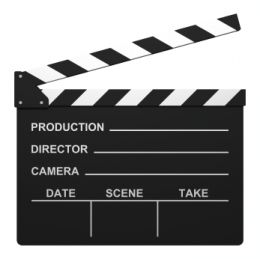 Just firing up the webcam with a press release you highlighted five minutes earlier is asking for trouble.
Just firing up the webcam with a press release you highlighted five minutes earlier is asking for trouble.
Tone is a tricky thing to master on camera. When I worked at the BBC, reporters were always told to try and come across as a “trusted friend.”
Now everyone appears on screen and whether you are a CEO apologizing for leaving passengers stranded on the runway or a stylist demonstrating how to bling out shoes, always aim to come across as instructive, quotable, and likable. But speaking concisely while exuding warmth takes preparation.
I’m a firm believer in planning out your time on camera by writing out a plan that includes conversationally written phrases.
The top line method
So consider–what is your “top line,”the reason you are on camera in the first place? Why should we be listening to you? Before the camera switches on, take ten minutes to mix a bit of marketing and psychology with some basic journalism and create several finely tuned phrases that can be visited over and over again.
Sketch out a basic outline:
- Write out a full top sentence that sums up why you are there.
- Write out three simple phrases that back up or demonstrate your topic or position.
- Write out a final thought that kicks the conversation forward.
An outline like this can be written by PR folks as talking points to prep execs on a vetted message or casually by anyone for any topic, whether you are talking about parakeet care or a change in interest rates.
I like to write out the first sentence in full, just in case things get crazy and hectic before the camera goes on. Once I’ve got that full thought out of my mouth I can relax, expand with my three points, and then keep the audience wanting more by talking about what’s to come.
But Manoush, you might say, I have more points to make than just this! Or, this interview is going to be twenty minutes long and one top line just isn’t enough!
To which I reply:
If you are going to be interviewed for twenty minutes, how is the interview going to be used? Will it run in its entirety or be edited for soundbites? Your interviewer might ask you the same question over and over again trying to get you to come up with a certain duration, tone, or clarity. Ask what he’s looking for. If it is going to be a long unedited interview, prepare as many top lines as you need.
Use the top line method to expand on each of your points or keep going, creating as many top lines as you need. In my experience, the top line is the heart of your appearance. You might travel down various veins and arteries, going off on tangents for details or to make a supporting point, but all ideas flow back to the heart.
This will ensure your audience walks away with a message they can remember.
Manoush Zomorodi is the author of Camera Ready: How to Present Your Best Self and Ideas On Air or Online. Her on-camera expertise comes from years of producing and reporting for BBC News, Reuters Television, and other media outlets. She moderates conferences on digital technology and hosts live video events, in addition to doing media coaching.
For more information please visit http://www.manoushz.com, and follow the author on Facebook and Twitter



